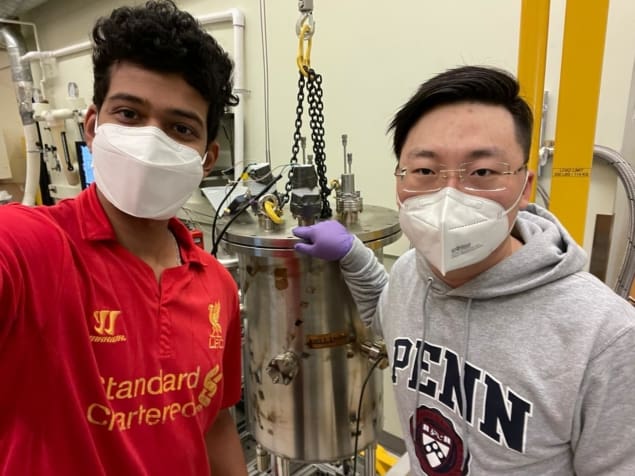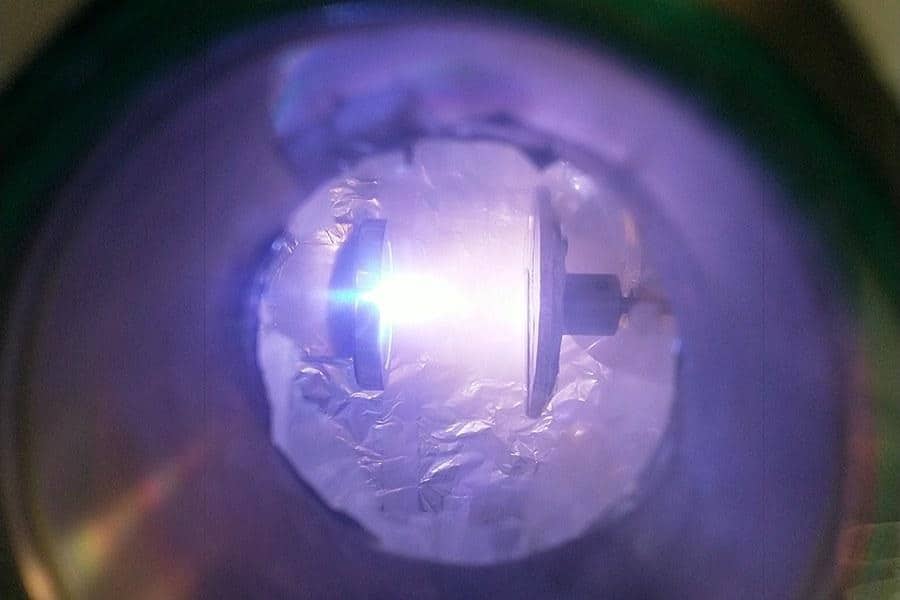 Zahra Fakhraai at the University of Pennsylvania, the researchers used an intense X-ray source to reveal extremely dense, highly stable structures within the films, which transitioned to more conventional bulk liquids above a certain temperature.
Zahra Fakhraai at the University of Pennsylvania, the researchers used an intense X-ray source to reveal extremely dense, highly stable structures within the films, which transitioned to more conventional bulk liquids above a certain temperature.
Glasses typically form as a material undergoes rapid cooling from its molten state. Below a certain transition temperature, molecules within this supercooled liquid (SCL) slow down, allowing the material’s structure to solidify. The result is a substance with similar properties to a crystalline solid, but with atoms in a disordered configuration that more closely resembles a liquid.
If the glass is subjected to temperatures higher than its transition temperature, thermodynamic effects can drive its molecular structure into a state of equilibrium over time as the material gradually relaxes into structures such as droplets and ordered crystals. Although this effect is limited in bulk glass, it presents more of a problem for ultrathin, nanoscale glass films formed from SCLs. Due to their low transition temperatures, these useful materials are prone to forming droplets and crystals as they age, inhibiting the capabilities of small-scale features.
Keeping molecules mobile
To circumvent this issue, Fakhraai’s team used a technique called physical vapour deposition (PVD). Here, solid films form directly from gases as molecules are deposited onto a substrate. By keeping the substrate just below the transition temperature of the glass, the team ensured that the molecules remained mobile enough to rearrange themselves, and thus to adopt more stable configurations as they relaxed to their equilibrium state.
The result was a highly stable glass film with a structure that could not have been achieved through conventional techniques except via millions of years of aging. To study the structure of this film in more detail, Fakhraai and colleagues used extremely powerful X-rays produced by the National Synchrotron Light Source II at Brookhaven National Laboratory.

Alumina glass bends rather than breaking
Through their analysis, the team discovered that the PVD method produced an entirely new type of liquid. Arising within films between 25 and 55 nanometres thick, this liquid undergoes a phase transition to a typical bulk liquid at transition temperatures roughly 35 K cooler than ordinary SCL transitions. Intriguingly, this exotic new phase is extremely dense, with molecules more closely packed together than the researchers had thought was possible without applying immense pressures.
In future experiments, Fakhraai’s team hope to study the parameters of this unique phase transition in more detail. The discoveries they make could provide a deeper understanding of the behaviour of glasses as a whole. Subsequently, improvements to existing theories could serve as a predictive platform for developing new, more advanced glass-based materials.
The research is published in PNAS.
